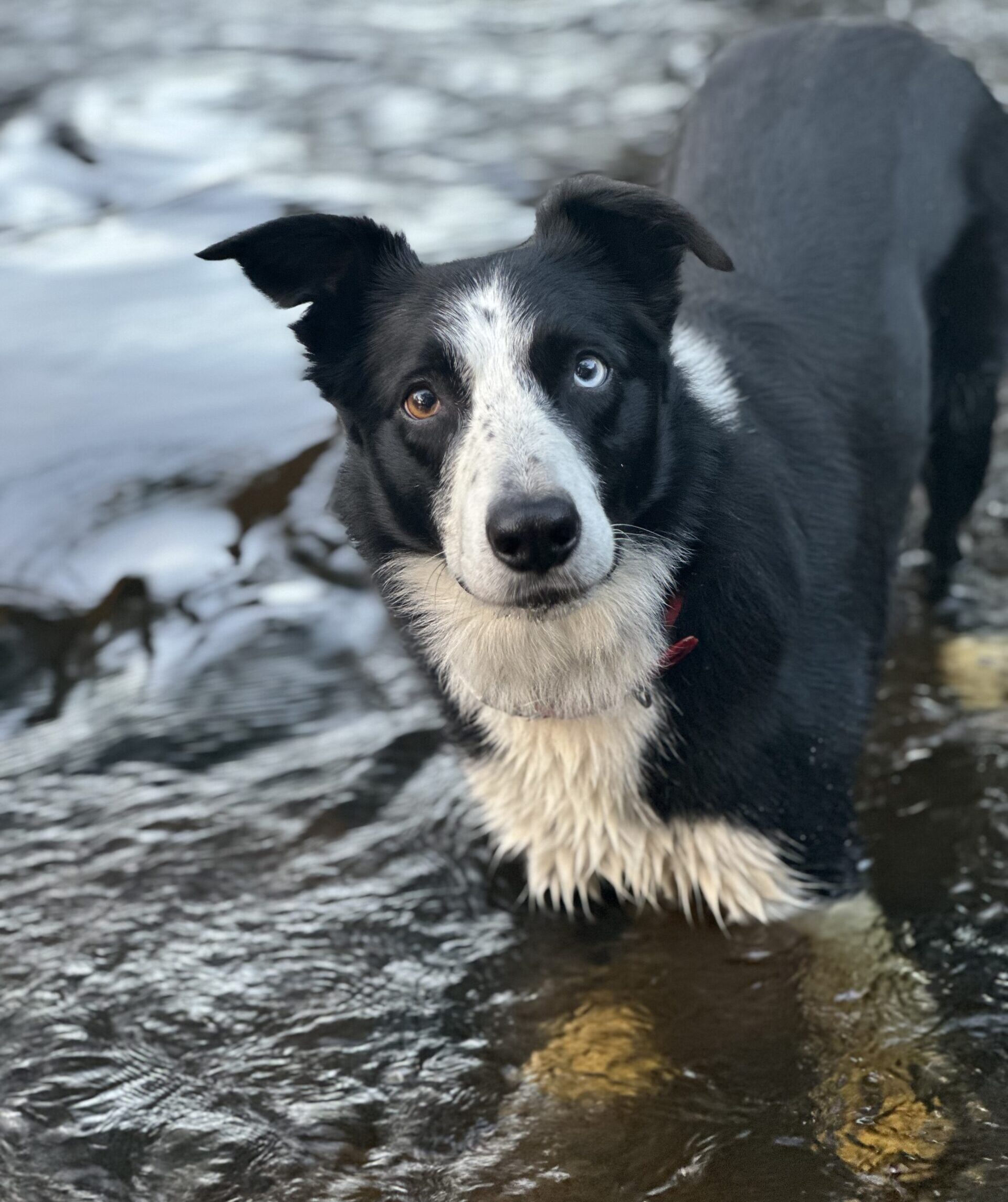Water obsession is something many Border Collie owners quietly struggle with — the frantic digging, the biting at moving water, the inability to disengage, and in some cases the risk of water intoxication. In this blog, I want to take you behind the scenes of my own experience with Kite and share what I’ve learned after working through this with several dogs over the years.
This isn’t a “quick fix” story. It’s a realistic look at what water obsession can look like, where it comes from, and how we can work with it rather than against it.
Understanding Kite’s Water Obsession
Kite’s obsession appeared when he was still very young. As soon as he discovered streams and moving water, he realised he could make the water “react” by biting and digging. And because Border Collies are movement-driven dogs, that feedback became incredibly reinforcing for him.
At first, I thought it might be linked to the discomfort he experienced as a puppy (Giardia, Campylobacter, tummy pain, etc.), especially because he had a few other small obsessions that later disappeared as his health improved. But the water obsession stayed — and in fact became stronger.
Very quickly it escalated to the point where:
- He could not be recalled away from water
- He would run off in fields the moment he heard a stream
- He would disappear into ditches
- He would lose all awareness of me
- I worried about him getting swept away in winter rivers
This wasn’t safe, and it wasn’t sustainable. So I started working on it.
Managing the Early Months: Safety First
Before any training could actually happen, I had to stop him rehearsing the behaviour. That meant:
- Long line on all walks near water
- No access to the river
- Monitoring paddock access
- Using raised, attachable water bowls so he couldn’t dig them out
- Preventing him from emptying buckets or troughs
It wasn’t about punishment — it was about keeping him safe while I built the foundation he needed.
Using the Premack Principle
One of the most powerful tools I used was the Premack Principle:
using something the dog wants (water access) to reinforce a behaviour he doesn’t want (coming away from water).
This meant:
- Long line on
- Call him away from the trough
- When he offered engagement (eye contact, nose touch), I let him go back to the water
- Repeat, repeat, repeat
Because water was so valuable to him, it reinforced the behaviour I needed — returning to me.
Over time:
- He became able to disengage
- He started to choose me before the water
- The water trough became boring
- Streams became manageable
- And eventually he could ignore water unless I allowed him to go in
Today, in small streams and ditches, he simply checks in with me and then walks on if I say no.
But What About Pain or OCD?
It’s an important question. And before assuming genetics or reinforcement, you must rule out physical causes.
Kite has been:
- X-rayed
- Physio checked
- Assessed for spinal pain
- Monitored during exercise
Nothing suggests discomfort. And then came the confirmation that made everything finally click…
The Genetic Piece
Kite’s father consistently produced dogs with the same water obsession.
His full sibling and half siblings do it too.
My friend who knows the bloodline confirmed it.
So while training makes a huge difference, there is absolutely a genetic predisposition behind it as well — and Kite as a dog is naturally obsessive in many areas.
This doesn’t make it hopeless. But it does mean it’s not a simple, quick-behavioural adjustment.
Where We Are Today
Kite is now nearly two. His progress looks like this:
- Streams & ditches: he can disengage easily
- Ponds: he needs a couple of reminders but stays with me
- River: the hardest challenge, still work in progress
Right now I’m training him to play with me around water — tug, retrieve, engagement games — to make me more rewarding than the movement of the water.
The goal:
Eventually being able to swim and fetch safely in the river without him obsessing and swallowing too much water.
We’re close, but not quite there.
Training Takaways
If your dog obsesses about water:
✔️ Manage first — stop the rehearsal
✔️ Train recall and engagement away from water
✔️ Use Premack: access to water after responding to you
✔️ Work at the easiest version of the problem first
✔️ Build a relationship that competes with environmental reinforcement
✔️ Don’t rely only on food or toys — use meaningful rewards
✔️ Expect slow, steady progress, not a miracle cure
And most importantly:
Not every obsession is rooted in anxiety or trauma. Some are simply genetic tendencies interacting with the dog’s environment.





